
Table of Contents
ToggleIntroduction
The Crown Jewel of Fiordland
As one of the most beautiful fjords in the world, Milford Sound in New Zealand is well-known for its astounding natural beauty. Situated on the southwest coast of the South Island of New Zealand, this fjord is part of the Fiordland National Park and boasts a striking scenery of towering cliffs, verdant rainforests, and glistening waters. Many people from all over the world have Milford Sound in New Zealand on their bucket lists because of its breathtaking scenery.
The striking landscape of the fjord, sculpted by long-gone glaciers, offers a breathtaking vista. Discover the magnificence of Mitre Peak, rising nearly 1,700 meters above the fjord, and the breathtaking waterfalls that flow down its sheer cliffs, when you visit Milford Sound in New Zealand. For those who love the outdoors, take photographs, or are just looking for a peaceful getaway, Milford Sound in New Zealand provides an amazing experience.
The Myth and Magic
The mythology and stories that envelop Milford Sound in New Zealand add to the area’s attraction beyond its natural beauty. Per Maori mythology, the fjord was sculpted as a serene and exquisite location by the enormous giant Tute Rakiwhanoa. Incorporating these tales onto the already breathtaking natural scenery accentuates its cultural diversity.
In addition to its natural beauty, Milford Sound in New Zealand attracts tourists today because it offers a feeling of wonder and a link to the past. A wonderfully magnificent site, Milford Sound in New Zealand, combines natural beauty with cultural significance.
The Geological Marvels
The Formation and Features
Millions of years of glacial activity have created the geological features of Milford Sound in New Zealand. Glaciers sculpted the present-day fjord by cutting profound valleys into the landscape during the last Ice Age, which were then submerged under seawater. The fjord’s characteristic U-shaped valleys, steep cliffs, and deep waters are the result of this geological process.
Mitre Peak, which towers nearly 1,700 meters above the fjord, is one of the most recognizable aspects of New Zealand’s Milford Sound. This peak adds to the stunning morphology of Milford Sound in New Zealand, as do the adjacent peaks such as the Earl Mountains. The Stirling Falls and Lady Bowen Falls are two other noteworthy features. The latter are particularly striking during a period of intense rainfall.
The Flora and Fauna
Apart from its natural characteristics, Milford Sound in New Zealand is inhabited by a wide variety of plants and animals. Ancient trees, such as Kahikatea and Rimu, are abundant in the verdant rainforests that border the fjord because they tolerate the region’s damp, moderate temperature.
Wildlife of a wide variety is supported by the vegetation of Milford Sound in New Zealand. Some of the area’s most common bird species are the Takahe, a unique flightless bird, and the Kea, a mountain parrot renowned for its intelligence. With species like the Hector’s dolphin and a variety of fish found in the fjord’s waters, the marine life is likewise diversified. Milford Sound in New Zealand is a fascinating travel destination for naturalists and wildlife enthusiasts because of its distinctive geological features and abundant biodiversity.
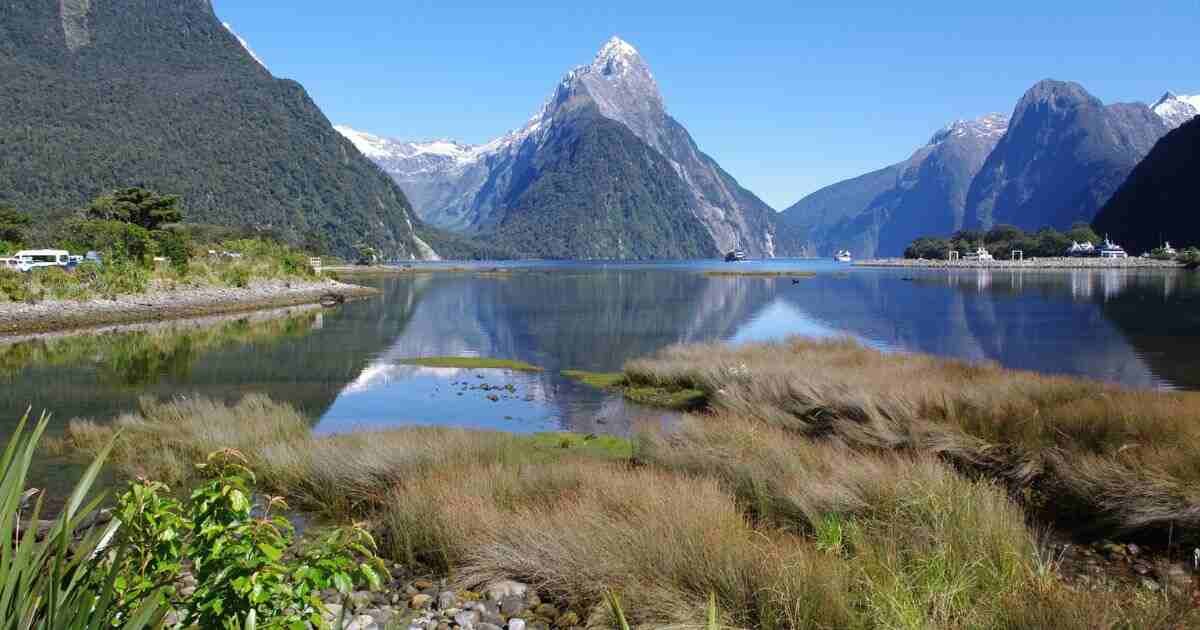
How to Reach Milford Sound: Travel Options
Driving to Milford Sound
Traveling by car from Te Anau to Milford Sound in New Zealand is the most common route. Some of New Zealand’s most picturesque sights may be seen during a trip along State Highway 94. The breathtaking Fiordland scenery will be seen along the way, including the charming Mirror Lakes and the amazing Homer Tunnel, an artificial tunnel that winds through the mountains.
It usually takes two hours to drive from Te Anau to Milford Sound in New Zealand, but you should plan extra time for breaks and to take in the breathtaking scenery. Driving carefully and being ready for shifting weather conditions are crucial due to the road’s remote and winding character.
Scenic Flights and Tours
Consider booking a scenic flight to Milford Sound in New Zealand for a more opulent and expedient experience. Beautiful aerial views of the fjord and surrounding landscapes are available from flights departing from Queenstown, Te Anau, and other adjacent areas. The striking terrain and verdant valleys of Milford Sound in New Zealand are best viewed from above with these flights.
From quick 30-minute tours to lengthy outings that combine aerial views with a fjord boat cruise, scenic flights can be found. For those who want to make the most of their time and see Milford Sound in New Zealand from above, this is the best option.
Best Time to Visit
Seasonal Highlights and Weather Patterns
Your selections for weather and visitor activities will determine when is the best time to visit Milford Sound in New Zealand. Every season provides a different experience:
Summer (December to February): The best time to visit Milford Sound in New Zealand is during this period. With temperatures between 10°C and 20°C, the weather is often mild and steady. Boat rides and outdoor activities are best enjoyed during the longer daylight hours.
Autumn (March to May): With brilliant shades of red, orange, and yellow, autumn brings about a stunning transformation in the leaves. Compared to the summer, there are fewer people and a lower but still nice temperature.
Winter (June to August): A peaceful environment and snow-capped summits make winter a lovely season. Although the weather is unpredictable and temperatures can drop below freezing, the snow-covered terrain creates a striking contrast with the dark waters of the fjord.
Spring (September to November): Spring brings with it a season of rebirth, as flowers bloom and the weather gets warmer. For those who want to take advantage of the nice weather without having to deal with the summer crowds, this is the perfect time of year.
Practical Considerations for Different Seasons
It’s crucial to be ready for erratic weather when visiting Milford Sound in New Zealand, no matter when you decide to go. All year long, there is a lot of rain, and the fjord experiences abrupt weather changes. For a comfortable visit, wear layers of clothing and carry waterproof apparel.
Certain seasonal services and activities may also change. For example, certain hiking trails may be closed in winter owing to snow, whereas summer months offer prolonged daylight hours for various activities. To make the most of your trip to Milford Sound in New Zealand, check ahead for relevant seasonal information.
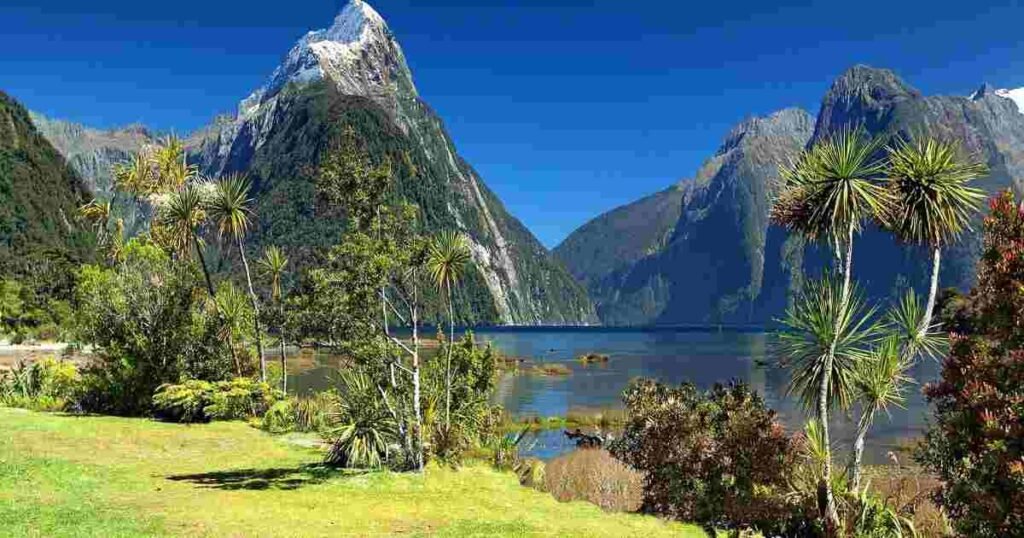
Exploring Milford Sound by Boat: A Scenic Cruise
Types of Cruises and Experiences
Taking a boat ride is one of the greatest ways to see Milford Sound in New Zealand. The breathtaking beauty of the fjord, with its many waterfalls and tall cliffs, may be seen up close on these tours. There are numerous cruise options to suit a range of interests and preferences:
Standard Cruises: A full tour of the fjord is provided by these, which normally last 1.5 to 2 hours. Milford Sound in New Zealand is rich in history, geology, and wildlife, and standard tours frequently include guided commentary on these topics.
Premium Cruises: Think about taking a premium cruise, which provides better comfort and facilities, for a more opulent experience. These cruises might offer longer tour durations, free drinks, and bigger, cozier boats.
Specialized Cruises: Certain companies provide specialty cruises that give a distinctive view of the fjord, such sunset or overnight excursions. With these choices, tourists can take in the serene splendor of Milford Sound in New Zealand at various times of the day.
Wildlife Spotting and Scenic Highlights
You may be able to see a wide range of wildlife while on your Milford Sound cruise in New Zealand. The waters of the fjord are frequently home to dolphins, notably the gregarious Hector’s dolphin. You may also see seals and penguins swimming in the ocean or relaxing on the rocks.
The boat cruise’s other main attraction is the fjord’s waterfalls. Stirling Falls and Lady Bowen Falls are very striking, especially in their full glory following a significant downpour. The combination of wildlife sightings and natural features makes a boat tour on Milford Sound in New Zealand a very unforgettable experience.
Hiking Trails Around Milford Sound
The Milford Track
One of the most well-known hiking routes in Milford Sound in New Zealand is the Milford Track, which is frequently rated as one of the top multi-day hikes globally. Glacier valleys, alpine meadows, and lush rainforests are just a few of the varied environments you’ll encounter on this 53.5-kilometer hike.
Hikers usually stay in DOC (Department of Conservation) huts along the track, which takes four days to finish. At the end of the fjord, where the walk comes to a finish, there are breathtaking views of Milford Sound in New Zealand from an unusual vantage position.
Other Notable Trails
The Routeburn Track: Fiordland National Park and Mount Aspiring National Park are connected by this well-known trail. Hikers have the opportunity to explore the varied topography of Milford Sound in New Zealand and its environs.
The Kepler Track: This circular walk offers breathtaking views of Milford Sound in New Zealand and the surrounding Fiordland region, beginning in Te Anau. For those who want to see the area’s natural splendor in less time, this is a fantastic choice.
Shorter Walks and Nature Trails
A few shorter treks provide a taste of the splendor of Milford Sound in New Zealand for those with limited time. For instance, the Key Summit Track is an excellent choice for a half-day climb and offers expansive views of the fjord and the surrounding mountains.
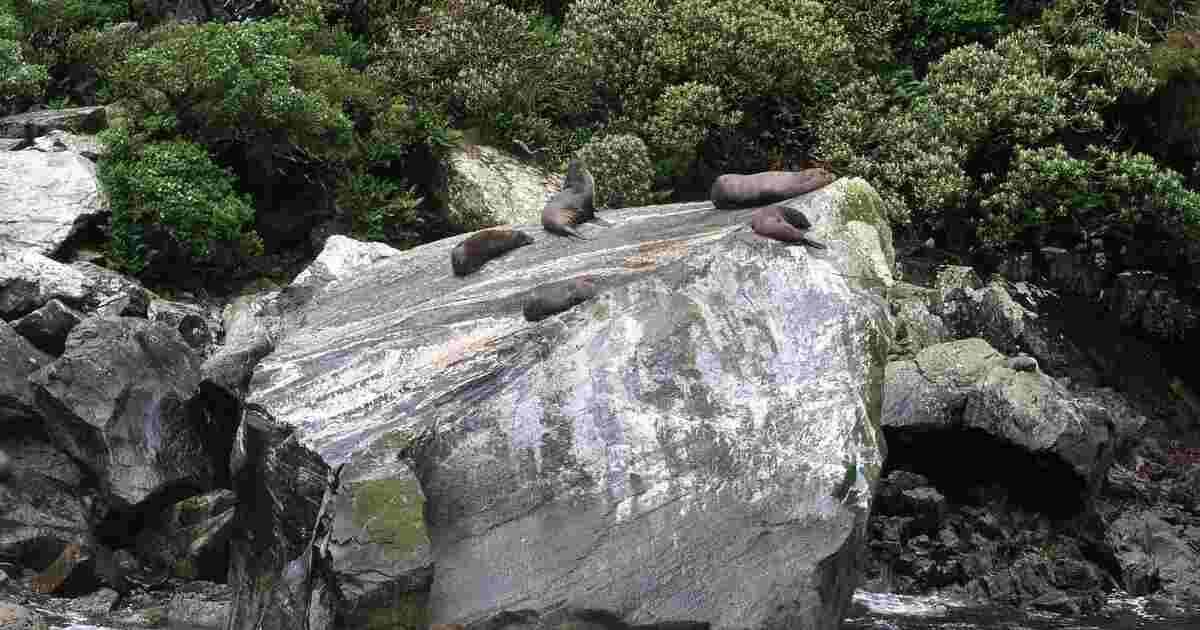
Wildlife and Marine Life
Marine Ecosystems
The waters of Milford Sound in New Zealand are home to a wide variety of fish and marine mammals. The deep, dark waters of the fjord provide a special habitat for marine life, which includes the critically endangered black coral that grows to great heights in the fjord.
During boat cruises, one can frequently witness the amusing Hector’s dolphin, which is among the common marine animals. You can witness seals and sometimes even penguins swimming in the waters of Milford Sound in New Zealand or relaxing on the rocks.
Avian Species and Habitats
Many different bird species can be found in the surrounding rainforests and alpine meadows of Milford Sound in New Zealand. Frequently sighted in the region is the Kea, a very clever mountain parrot. Other noteworthy bird species are the elusive Kiwi, the renowned flightless bird of New Zealand, and the Takahe, a big, flightless bird that was formerly believed to be extinct.
There are many possibilities for birdwatchers to view and capture photographs of these rare species, which will enhance their experience of Milford Sound in New Zealand.
Top Attractions and Landmarks
Iconic Peaks and Waterfalls
There are a number of famous sites in Milford Sound in New Zealand that are a must-see. Mitre Peak is one of the fjord’s most photographed landmarks because of its remarkable look and enormous height. This summit offers visitors a stunning backdrop, as do the other peaks and cliffs.
The fjord is renowned for its breathtaking waterfalls, such as Lady Bowen Falls and Stirling Falls. These waterfalls produce a breathtaking display of natural force when they reach their full height, which is especially remarkable during and after periods of severe rain.
The Underwater Observatory
Consider visiting the underwater observatory for a distinctive viewpoint of Milford Sound in New Zealand. This facility offers a fascinating look into the underwater world by allowing guests to explore the aquatic ecosystem beneath the fjord’s surface.
Views of the fjord’s varied marine life, including fish, black coral, and other marine creatures, may be had at the observatory, which is situated at Harrison Cove. This attraction is a fantastic addition to any trip, offering an alternative perspective on the natural beauty of Milford Sound in New Zealand.
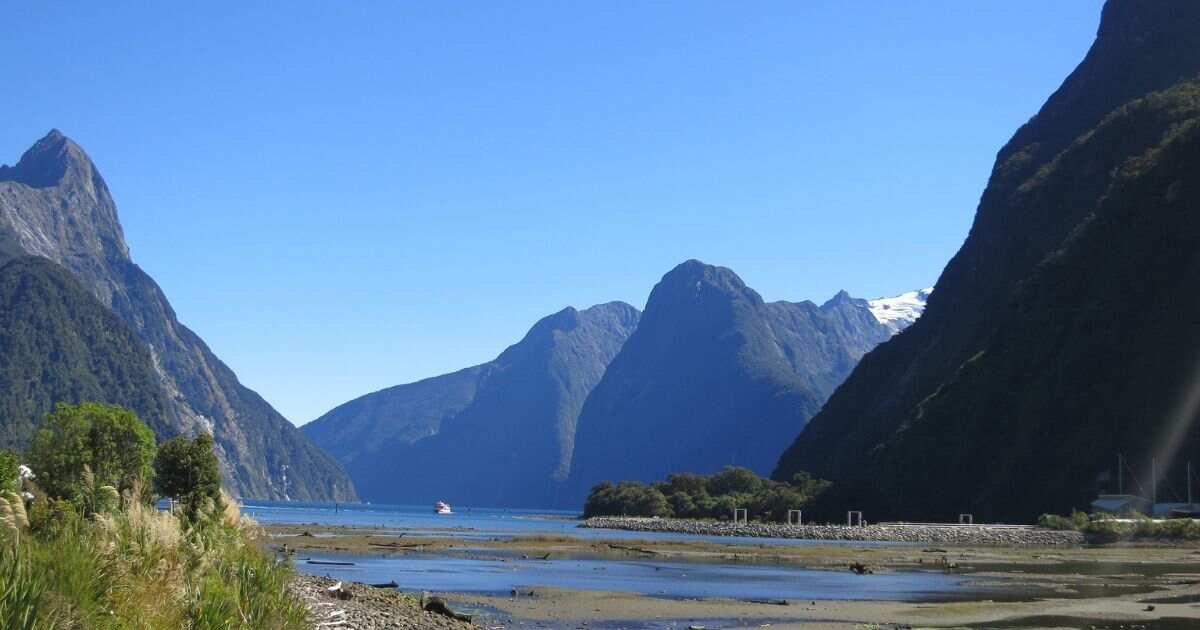
Weather and Climate
Understanding the Climate
There’s no denying the unpredictable nature of the weather in Milford Sound, New Zealand. Considered one of the wettest locations in New Zealand, the fjord receives more than 6,000 millimeters of rain on average annually. Visitor preparation should include rain gear because the weather can change quickly and precipitation is typical throughout the year.
Seasonal variations exist in the temperature of Milford Sound in New Zealand. The normal summer temperature is between 10°C and 20°C, but the wintertime low can be below freezing. If you want to be comfortable throughout your visit, you must pack waterproof gear and wear layers.
Tips for Dealing with Weather Conditions
Given that the weather in Milford Sound in New Zealand is erratic, it’s a good idea to research forecasts before departing and make plans appropriately. A more pleasurable stay can be ensured by packing waterproof gear, dressing in layers, and being ready for abrupt weather changes.
Photography Hotspots
Best Locations for Stunning Shots
There are plenty of options to take beautiful pictures in Milford Sound in New Zealand. Important spots include the well-liked vantage sites along Milford Road, offering broad vistas of the fjord and neighboring peaks. Photographically, the fjord’s reflected waters can produce mirrored views of the surrounding area that are rather remarkable.
The waterfalls at Milford Sound in New Zealand are also very picturesque, especially right after a lot of rain, when they look their best. Images with mist, rainbows, and falling water produce striking and lovely effects
Tips for Capturing the Perfect Shot
Consider going to Milford Sound in New Zealand in the beautiful hours of dawn and dusk for the best effects. At certain times, the fjord’s natural beauty is enhanced by the gentle, warm light, which also makes for perfect photography lighting.
Don’t forget to pack protective gear for your camera and be ready for any weather changes. Since Milford Sound in New Zealand is a damp environment, photographers may have difficulties; therefore, it’s important to maintain equipment dry and secure.
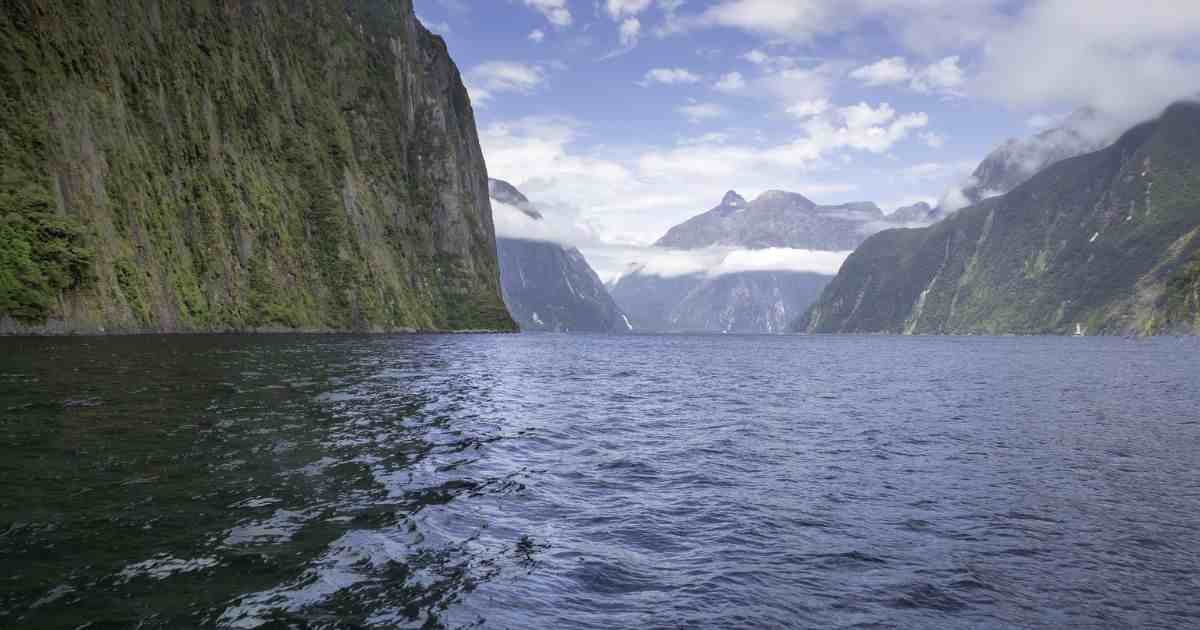
Sustainable Tourism
Conservation Efforts and Practices
The goal of Milford Sound in New Zealand is to protect its unspoiled beauty for future generations by using sustainable tourist techniques. The main goals of conservation initiatives are to safeguard regional species, reduce negative effects on the environment, and encourage ethical travel.
Tour companies in Milford Sound in New Zealand frequently take part in environmental conservation initiatives and follow rules intended to lessen their environmental impact. It is suggested that visitors adhere to environmentally responsible behaviors, like reducing their waste, showing consideration for wildlife, and using the authorized walkways.
Visitor Responsibility and Best Practices
By adhering to a few basic rules, visitors to Milford Sound in New Zealand can support sustainability initiatives. Stay off designated trails, don’t disturb wildlife, and dispose of rubbish correctly. Encouraging neighborhood companies that put environmental responsibility first aids in the promotion of eco-friendly travel strategies in the area.
Accommodation and Dining Options
Where to Stay
There isn’t much accommodation available in Milford Sound in New Zealand itself, but there are several options in the nearby town of Te Anau. Te Anau offers a range of lodging alternatives to accommodate diverse budgets and tastes, ranging from lodges and holiday parks to hotels and motels.
Closer to Milford Sound in New Zealand are a few housing options for people looking for a more immersive experience. The Milford Sound Lodge, for example, provides excellent lodging and easy access to the fjord.
Dining Options
Te Anau has a range of dining establishments, including informal cafés, eateries, and pubs serving different types of food. Numerous restaurants provide a flavor of the cuisine of the area by emphasizing seafood and products that are sourced locally. Think about dining at establishments that prioritize creative cuisine and fresh, local food for a more sophisticated dining experience.
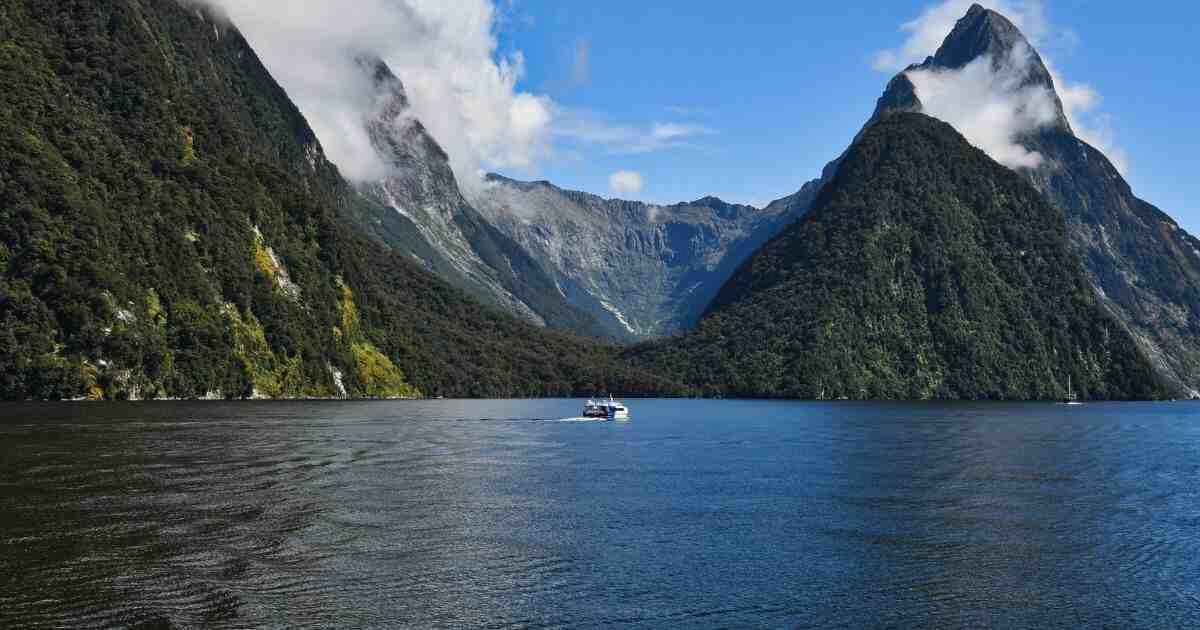
Tips for a Perfect Visit
Planning and Preparation
To make the most of your visit to Milford Sound in New Zealand, consider the following tips:
Plan Ahead: Because Milford Sound in New Zealand is so well-known, it’s best to reserve tours and lodging well in advance. This guarantees that you get your first choice and keeps you out of trouble at the final minute.
Dress Appropriately: Layer your clothing and pack waterproof items to be ready for any weather change. Being ready for anything might help guarantee a comfortable vacation, as the weather in Milford Sound in New Zealand is not always predictable.
Allow Extra Time for Travel: Make appropriate travel plans because the drive to Milford Sound in New Zealand might take many hours. To truly enjoy the trip, allot time for picturesque stops along the way.
Respect the Environment: Maintaining the natural beauty of Milford Sound in New Zealand requires observing all wildlife protection regulations and staying on designated pathways. Encouraging tourism behaviors aid in preserving the area’s distinctive ecosystem.
Conclusion: Why Milford Sound is New Zealand’s Natural Gem
Milford Sound in New Zealand is a remarkable natural treasure that provides a unique blend of amazing vistas, abundant fauna, and remarkable experiences. Milford Sound in New Zealand captures the spirit of the country’s natural beauty, from its striking geological features and tranquil fjord waters, to its varied hiking paths and environmentally friendly tourist methods.
Whether you choose to hike the fjord’s paths, take a boat tour of it, or just enjoy the breathtaking scenery, a trip to Milford Sound in New Zealand is sure to be an enriching and unforgettable experience. This breathtaking fjord is a tribute to the amazing force of nature and one of the must-see locations in New Zealand because of its unmatched beauty and cultural significance.
